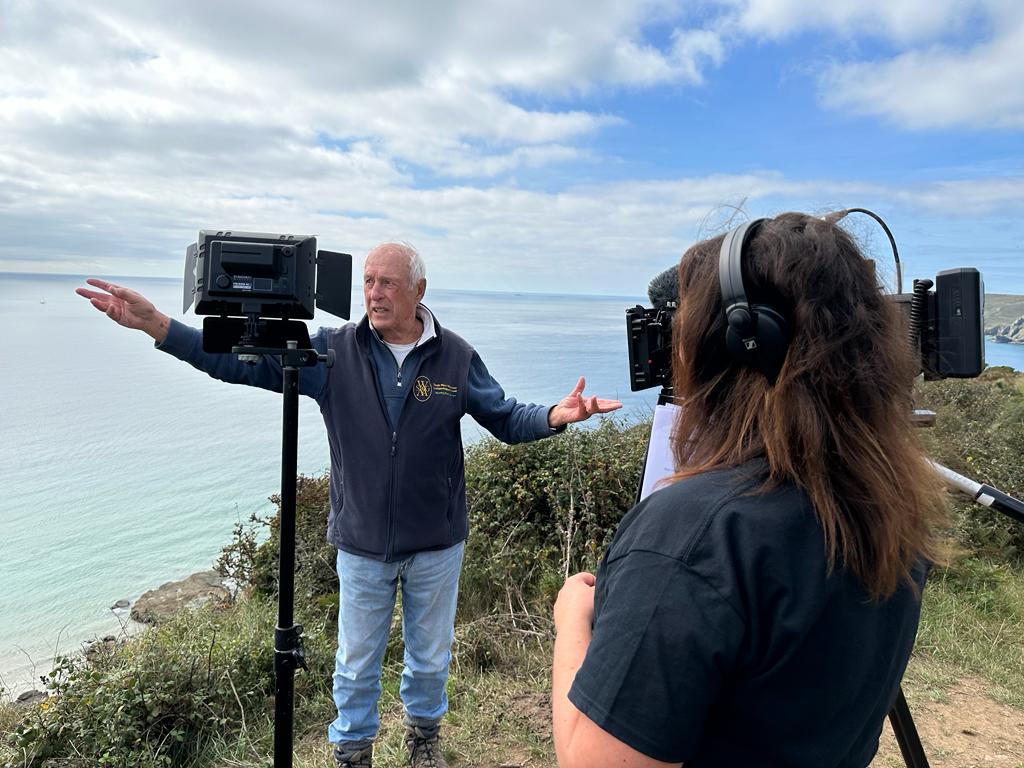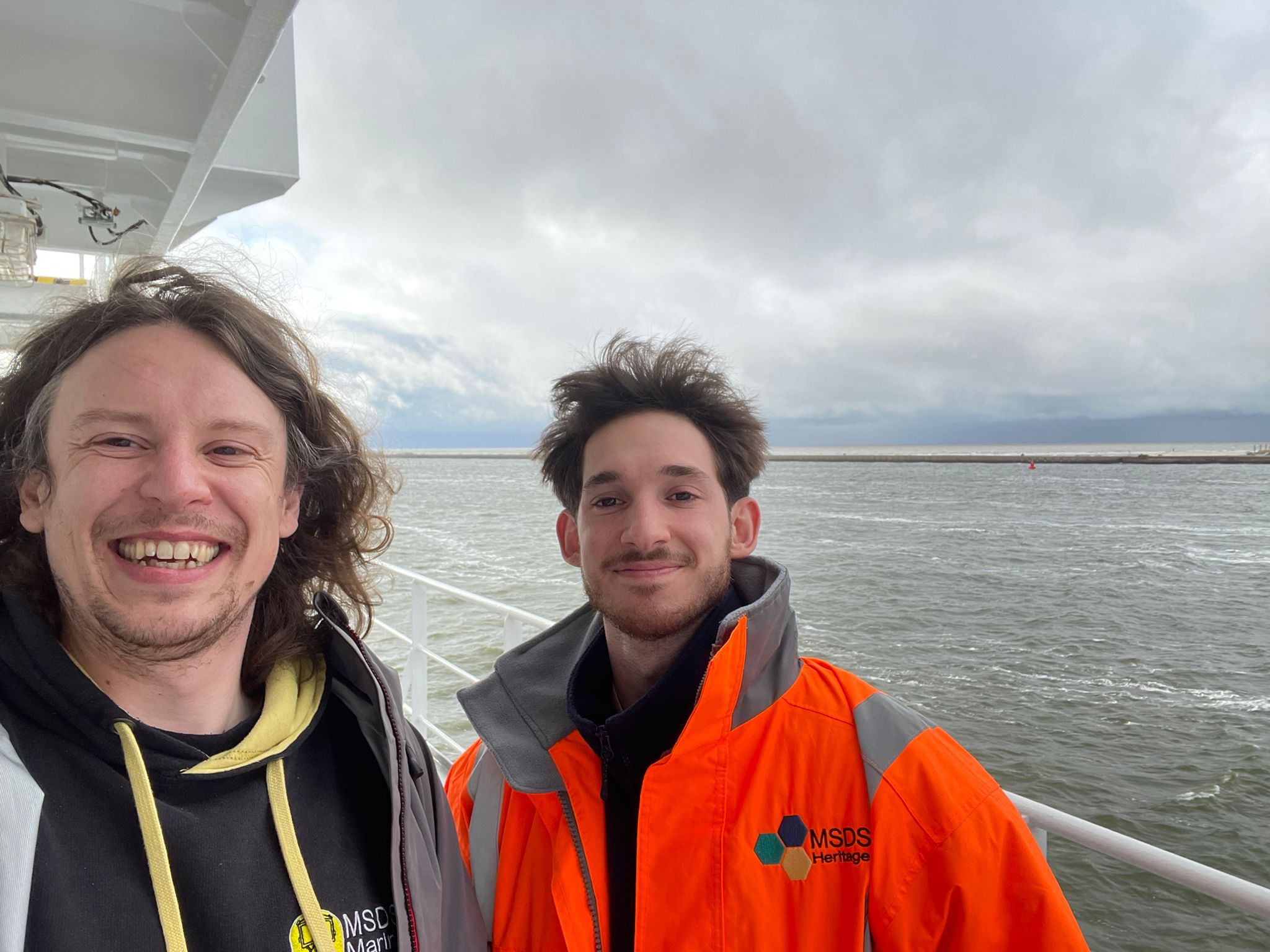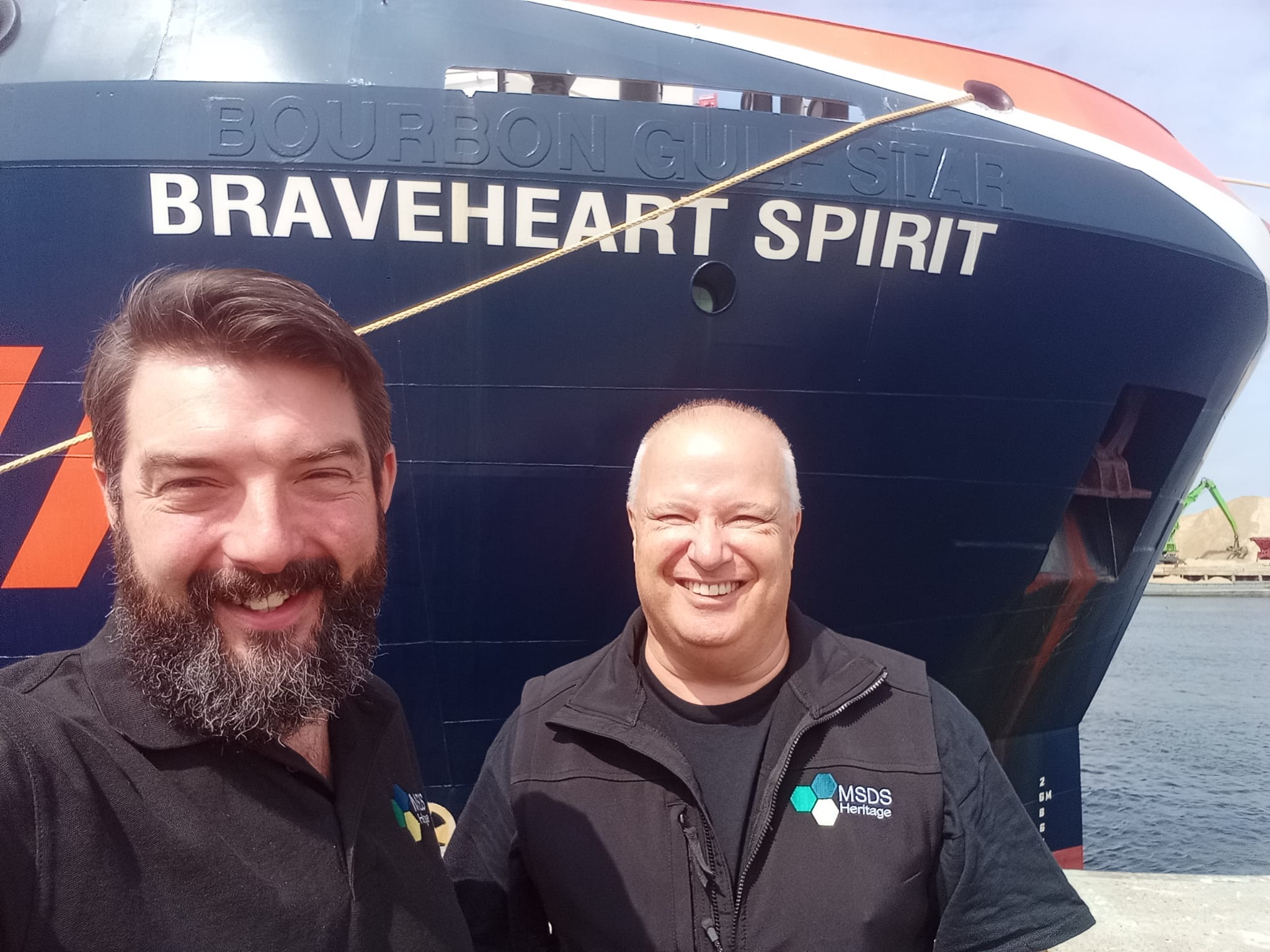Working offshore is a completely new environment for many people and it can come with its own challenges (as well as exceptional sunsets and sunrises that can not be beaten!). This blog from Alistair Byford-Bates is intended to help anyone thinking about working offshore, or planning it in future, know what to expect! You may also be interested in our day in the life of an archaeologist working offshore blog or our blog that looks at what its like to be a women working offshore!
Believe it or not, it is not often that marine archaeologists get the opportunity to work offshore for any length of time. However, when we do there are several things that are common across vessels and the companies that we work with, and that are worth considering making the experience easier for ourselves and for those around us. This blog lists ten potential considerations that we hope will help anyone wanting to work offshore in future or is thinking of making marine archaeology their career:
- Be prepared to sit around waiting a lot. You are potentially the smallest element in the campaign, and therefore active for only a tiny part of it. Lots of things can (and do) go wrong offshore as it is a hard environment for vessels, equipment, and people. Try to avoid asking how long it’ll take to get something working, and offer to get the coffees, you’ll be far more appreciated. When it goes wrong, it can get stressful very quickly, so be diplomatic, and stay out of the way where possible.
- Communication and internet access is variable, so plan ahead in terms of having GIS datasets, project documentation, forms, and reference material with you.
- You may be sharing a cabin the size of a shoebox with a colleague. Good routines, tidiness, and being mindful of each other is the key to making this work. 12 hours on and off does helps, but it does mean you have to have everything you want for your shift with you, in order not to disturb your opposite number. Don’t over pack, there is usually a basic laundry service, or facility to do your own onboard, and therefore packing light is recommended. Do take a metal thermal mug and plastic reusable water bottle for when you’re on shift (Glass water bottles are generally not allowed onboard).
- The vessels can vary from the new, huge, and well-furnished to old, worn out, and basic. A good sense of humour can be essential to keep any niggles concerning the vessel to the minimum, as change takes time, requires funds, and often multiple approvals. Generally, the food is good (in some cases excellent!) and there are four mealtimes a day to match the shifts. Communal spaces, day rooms and communal entertainment can be eclectic to say the least.
- You do need to be adaptable and willing to fit into the everyday routines that operate on the vessel in terms of behaviour, and minimum expectations on things like noise. Generally, the crews and vessel go from project to project and so have months and years of doing things in a set way that works for them. Avoid controversial or divisive topics of conversation as people are from all over the world, of different faiths, and on different life journeys when you meet them. English is generally the shared language onboard.
- Take good ear plugs for sleeping. Take gym kit, and indoor footwear for everyday use (Crocs are popular!) as well as any required PPE. Take plenty to read, listen to, or watch, and remember you’ll have very restricted bandwidth so generally no Netflix, downloads or online gaming.
- Privacy and personal space can be limited so try to find time to go on deck and relax and see daylight, outside of work. The days can be long, and your mental health needs to be cared for too.
- Be confident, at some point you will potentially be making decisions costing large sums of money, which will be accepted based on your professional knowledge and the guidance and requirements from the Written Scheme of Investigation/archaeological methodology/MMO license. The first time explaining that you do want to an extensive TSS (below seabed conductivity) survey, followed by the targeted dredging of multiple additional targets for multiple days when a campaign is already running a month late can be daunting, but is also why you’re there, you are the specialist and you are ensuring that the project is achieving the clients aims and objectives as required under the licences and agreed methodologies. New shipwrecks and aircraft crash sites do at least relieve the monotony of all the usual seabed detritus. Companies are there to make money, and therefore there can be subtle and not so subtle attempts to put pressure on you to bend to their will, this can also include teams who just want to go home, so be prepared to have to push back on maintaining the agreed methodology. The client representatives are key here to helping to prevent this occurring.
- Don’t forget to go through immigration before joining and when signing off from a vessel, this includes if you change between two ships in the same port, as well as before you head to the airport to fly home and therefore going through immigration again to leave. Do take copies of all your required documentation, both as hard and electronic copies, and do the required joining documentation in advance of joining the vessel, if possible.
- Finally, do enjoy the experience, you are generally the only people who are not a pinch point or under pressure to ensure everything is working. People like talking about archaeology and history, even if their views are slightly off the wall and potentially involve aliens, mystery societies, crypto-zoology, and more usually treasure and how to get it onboard discreetly!





